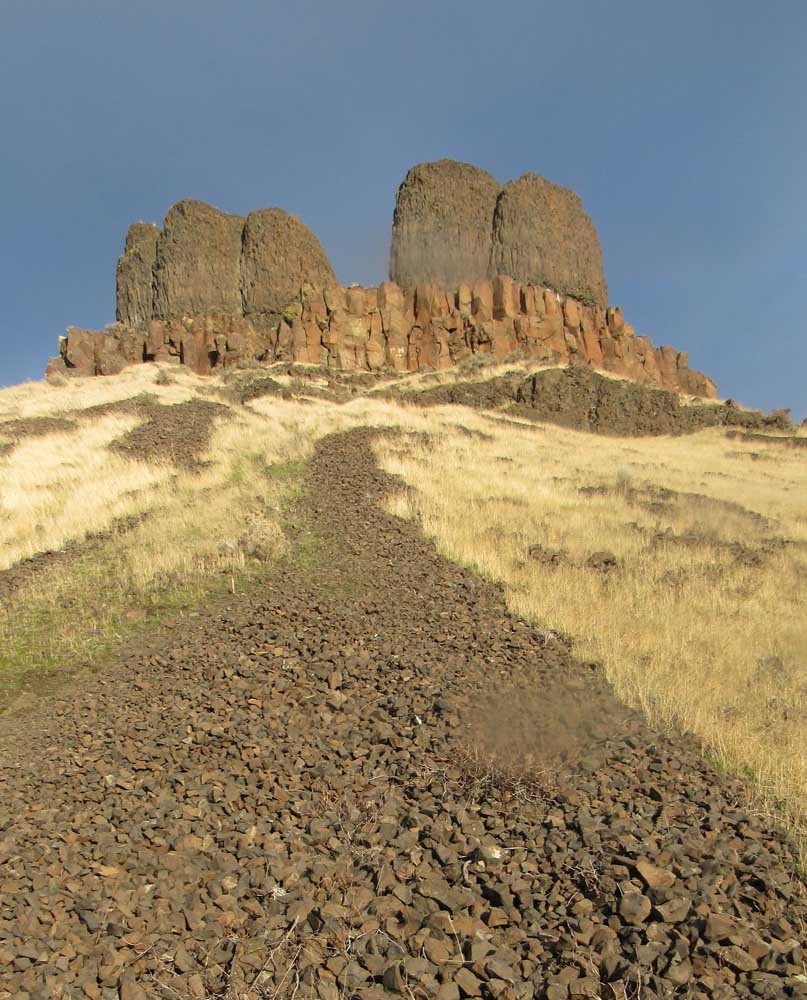Twin Sisters keep watch on Columbia drama
Published 3:00 am Tuesday, January 17, 2023

- A rock formation called Twin Sisters is easy to miss, but tourists can learn the history of this place — and take a short hike — if they have time.
Cayuse Sisters. Hell’s Smoke Stacks. Twin Pillars. Twin Virgins. Two Captains.
All are former names for Twin Sisters, two sumptuous basalt pillars beside the Columbia River 24 miles east of Umatilla in Wallula Gap. The pillars have a front-row seat as the Great River of the West makes a dramatic turn toward the Pacific Ocean.
It’s easy for drivers going 65 mph to blast past the Twin Sisters (the U.S. Board of Geographic Names made the name official in 1979). No visitor center welcomes tourists. No hot dog stand lures the hungry. No one sells souvenirs.
Signs alerting drivers to the turnout are all but nonexistent, so if you choose to go, slow down and keep an eye peeled for a wide spot in the road about a mile west of the Highways 12-730 intersection.
A short trail leads uphill to the Twin Sisters. A modest sign at the base describes the legend behind the geological formation.
The story goes like this: Coyote the trickster fell in love with three Cayuse sisters. Each morning the sisters would build a trap on the Columbia River to catch salmon. Each night Coyote would destroy their handiwork.
One morning Coyote, finding the sisters crying and starving, promised to build them a salmon trap if they would become his wives. They agreed.
For many years Coyote lived happily with the sisters. One day, though, he became jealous and used his supernatural powers to change two wives into basalt pillars.
The third wife Coyote turned into a cave downstream. He then turned himself into a rock so he could watch over them forever.
Much history has flowed past this landmark. Most notable were the “Two Captains,” Lewis and Clark, and their voyage of discovery, which camped at Spring Gulch two miles downstream on Oct. 18, 1805. The captains mentioned Wallula Gap in their journals — as Clark wrote, “the Countrey rises here about 200 feet above The water and is bordered with black rugid rocks, at the Commencement of this high Countrey on Lard Side.”
But not the Twin Sisters.
Today, the Twin Sisters are more under the eye of intrepid photographers than jealous Coyote or the launchers of America’s manifest destiny. The topography offers panoramic views over Lake Wallula, the reservoir behind McNary Dam. Located one mile east of Umatilla and 292 miles upriver from the Pacific Ocean, the dam was completed in 1954.
Human visitors will encounter views of golden hills of the channeled scablands festooned with sagebrush and tumbleweeds — all watched over by hawks and rabbits. In the evening, the low-slung sun paints Lake Wallula with diamonds.
According to the book “Hiking Guide to Washington Geology” by Bob Carson and Scott Babcock, the Wallula Gap was shaped by the Missoula floods about 15,000 to 18,000 years ago as well as by volcanic activity. Geologists have identified some 20 lava flows at Wallula Gap, and the Twin Sisters are “erosional remnants of single lava flow that is about 15.5 million years old.”
Sand dunes formed around the base of the Twin Sisters are mostly gone now, swallowed by vegetation. Rock climbing is prohibited.
The short trail leads to a saddle south of Twin Sisters. Hikers can scramble to a gap between the two rocks to check out Lake Wallula, a view much different from the free-flowing Columbia River the “Two Captains” experienced.




